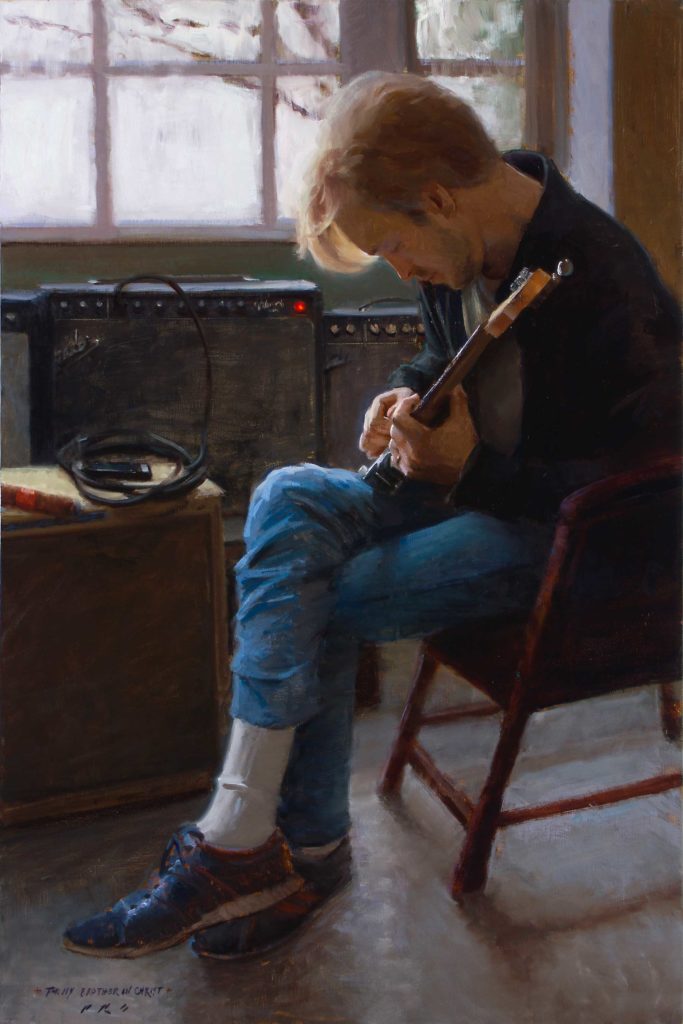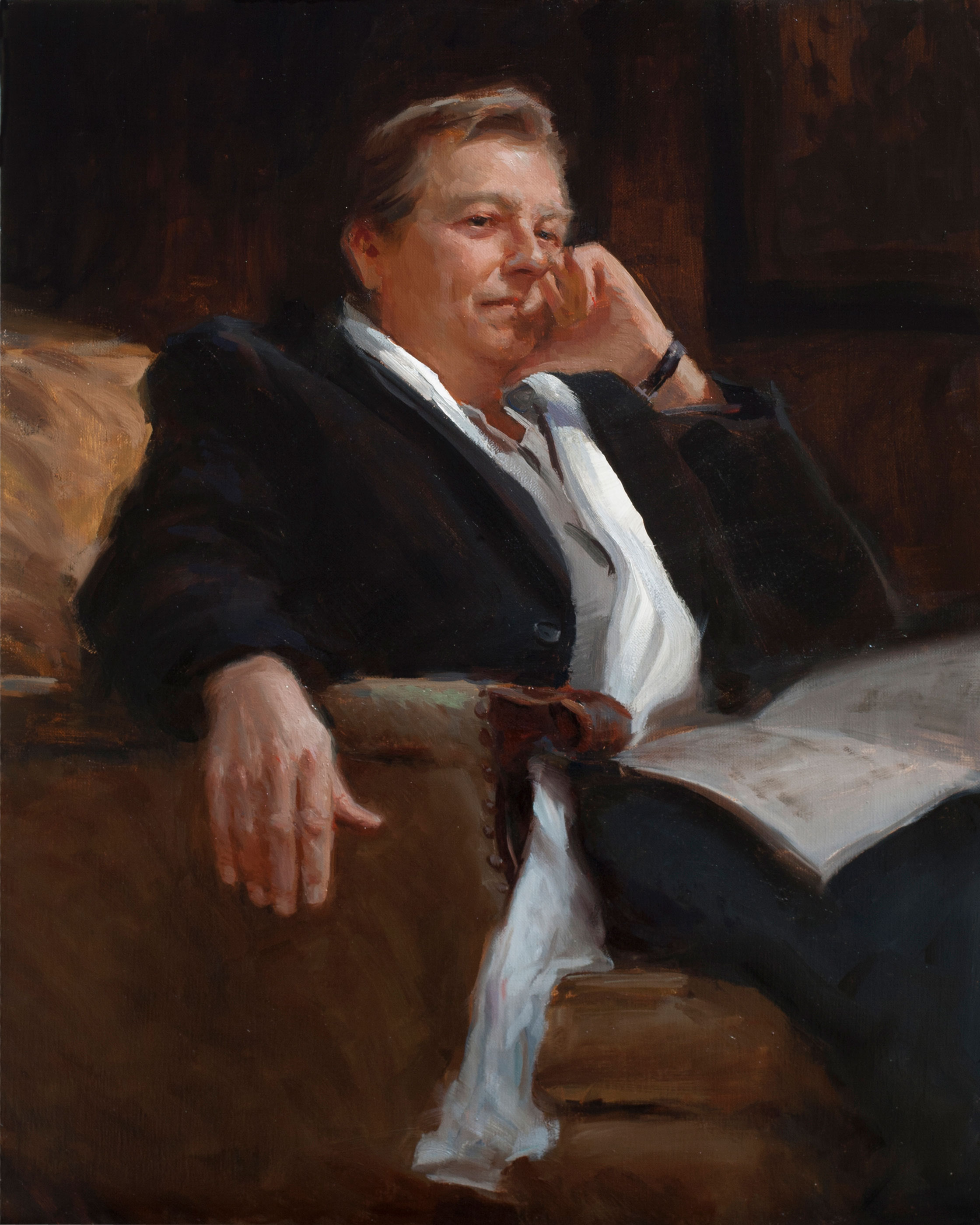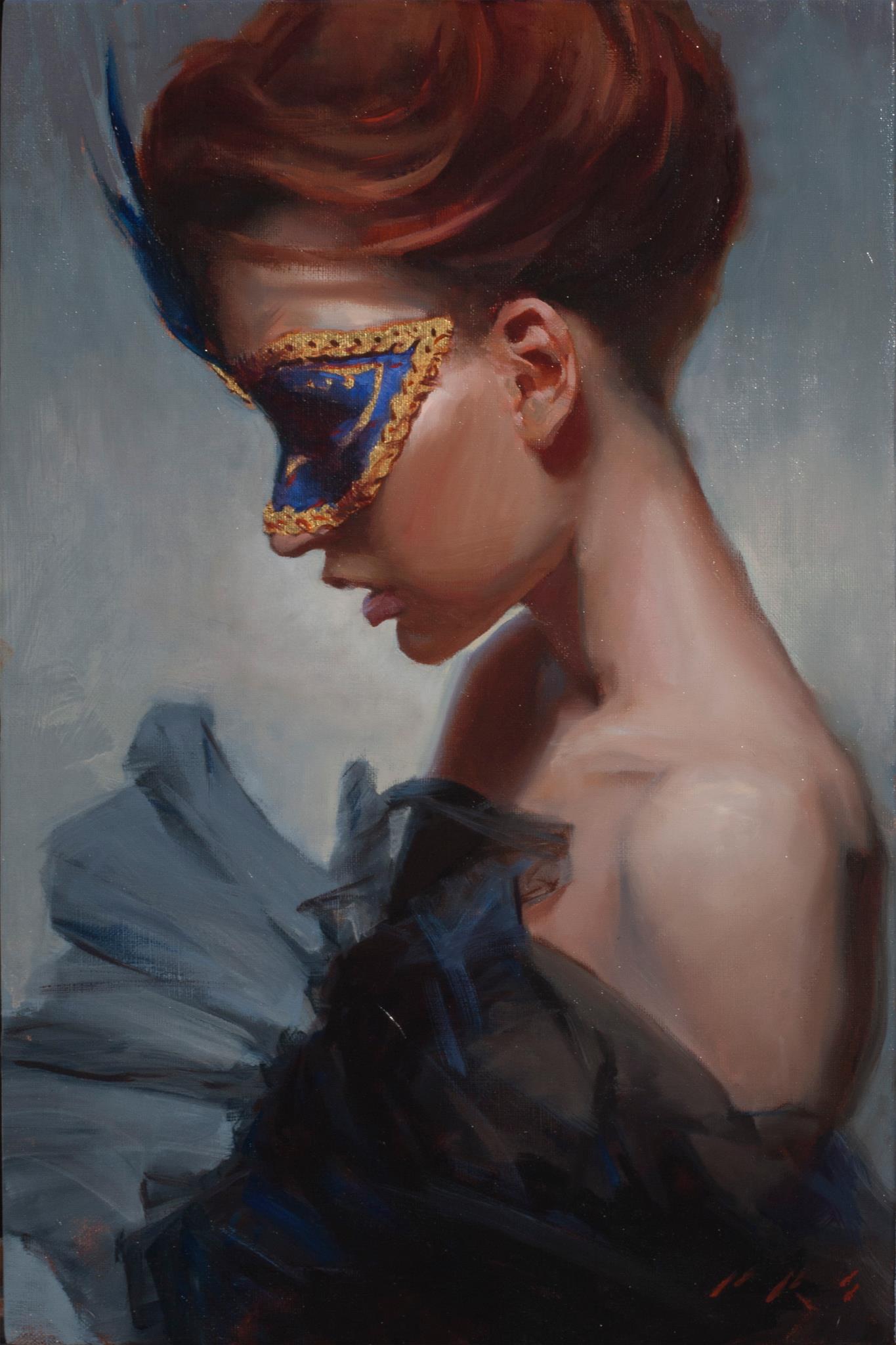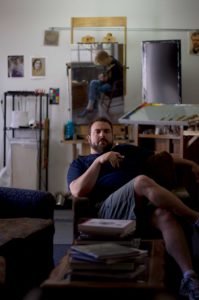Contemporary Art and Artists > “One of the frustrations with being an artist is hitting the proverbial ‘plateau,’ and if not handled correctly, such plateaus can make or break your artistic confidence,” says realist painter Tony Pro. Here are some of his tips to help you get past these bumps in the road to good painting.
On Getting to the Next Level
By Tony Pro (tony.fineartstudioonline.com)

“How do I get my work to the next level?” This is one of the most common questions I’m asked, aside from “what medium do you use?” It’s a question I not only hear, but one I ask myself every day. One of the frustrations with being an artist is hitting the proverbial “plateau,” and if not handled correctly, such plateaus can make or break your artistic confidence. Here are a few tips to help you get past these bumps in the road to good painting.
Attitude
The first thing to look at is your attitude toward your craft. A lot of artists would like to get better but not many want to get better. I hope you already know the subtle difference between these two mindsets, and since you are reading this article, I’ll assume that you fall into the latter category: you want to get better.
Having a positive attitude in getting your work to the next level is also going to require an open mind. It’s going to require an openness to accept that there are many ways to achieve a desired effect in painting, or many ways to achieve good draftsmanship in drawing. Having an open mind is the first step. Over the last 10 years, I’ve taught many classes and workshops to hundreds of people, and most of the time I have been younger than the students — sometimes 30 to 40 years younger!
It’s very difficult for a lot of people I know to take direction from someone who is young enough to be their son or grandson. In many cases I’ve been painting and drawing for half as long as some of my students. But this is where an open mind comes into play. Yes, I may have only been painting for 15 years and drawing for 20, but those 20 years were all strict academic study — studying the correct things with long and short figure and head drawing classes, learning from one of the best drawing teachers alive today.
Related Article > Figurative Artist Spotlight: McGarren Flack on Painting Emergency Scenes
So, getting to the next level means accepting that we may need to unlearn bad habits and re-learn good habits in drawing and painting. I can’t tell you how many times I’ve given instruction to someone, and they look at me and say, “How would you know that’s right? I’m older and have painted longer than you.” As I get older and grayer this has become less of a problem. Unfortunately, a lot of artists mistakenly believe their work has reached a certain maturity. They believe they know how to draw, so they take advanced painting classes. In these classes it becomes apparent that most of their mistakes are basic drawing problems.
To attack this problem we need to do whatever we can to get better, and that means study! Lack of draftsmanship is the cause of many of my students’ issues. The solution to better draftsmanship is quite simple: Draw! Draw from life; copy the drawings of artists who are good draftsmen. As a student I studied books by Andrew Loomis (Figure Drawing for All It’s Worth) and John Vanderpoel (The Human Figure) and copied ALL the drawings in the books. When copying these drawings, try to note the thickness or thinness of the stroke. Try to figure out how the artist held the pencil and which direction the hand went. Also try to understand the “design” or “idealization” of the drawings. Clearly, in a few examples of Loomis, you can see he made his models prettier—even though they were already pretty—or made men more heroic than they were. This is called idealization; it makes for a more attractive figure or portrait.
Another attack on bad habits is to confront your deficiencies head on. If you can’t draw feet or hands very well, then that is all you should study. Fill a few pages in your sketchbook with feet and hands and really hit it hard. A lot of artists will choose to leave hands, feet or both out of paintings because they can’t draw them well. Don’t do this! Instead, confront your fear and lack of ability and study the problem straight on. Do this with all aspects of head, figure, still life and landscape issues. This frontal assault will soon take your draftsmanship to all new levels.
It can also be helpful when trying to get to the next level be your worst critic when you look at your work. For some of us this is easy, but other artists love everything they do, even when it’s not very good. How can you expect to get better if you already love your work?
Artists can never draw too much, but when you draw, try to work from life. Try to understand light and how it works in gray before you move back to color. You will see after a month of strict academic study your work will improve.

Materials
Getting better often means using better materials. I always stand by what I learned from Richard Schmid, who said, “Always use the best materials you can afford.” Good paint, canvas and brushes can and will make you paint better.
If (mixing the right color) + (putting it in the right place on the canvas) = good painting, then this directly involves using the right materials to achieve the good painting you’re looking for. Most of us know that certain paint applied to certain surfaces works better than others, so it’s up to you to really experiment and see what works best for you to achieve the desired effect.
When I teach workshops or classes, I can always expect . . . “Here they come with the cheap cotton canvas and student-grade paint!” A lot of these artists are wealthy or well-off individuals, too. I even see people cutting corners by salvaging paint off the palettes of other students.

THERE ARE NO SHORTCUTS TO EXCELLENCE!!!!
This is a quote I learned from my dad and it is directly applicable to using materials. If you want excellent results you cannot take shortcuts with junk materials.
The combination of having the best materials and approaching with the right attitude can pull you out of that funk you’ve been in and get you into a whole new level of craftsmanship that the galleries and buyers are looking for.
hen I use lousy paint loaded with fillers and cheap, gritty pigment, it does not go on a surface as well as beautiful, handmade paint. There are many paint makers out there
(and I have used ALL of them), but the paints I have come to love, and which work exactly as I need them to are made by Michael Harding Oil Colours. Michael Harding paint is ground in linseed oil, and for me it goes on with the right smooth consistency and pigment strength I need to achieve strong color and long strokes.
When I make strokes, having the perfect brush is essential. Cheap brushes do not last and will cause you more frustration than anything. I exclusively use brushes made by Rosemary & Co. I particularly like the 279 Mongoose Series, the Ivory Series and the new Classic Series, which is a mix of Ivory synthetic and natural bristle. These brushes last forever (when you clean them after each use) and they operate like precision surgical tools.
Last but not least is choosing the right canvas or surface to hold your image. Linen is a much better surface to work on for me because the weave is better and stronger than cheap cotton substitutes. I haven’t tried using the new polyester canvases, but I can’t bring myself to do it, because it reminds me of Dad’s slacks from the ’70s.
I have come to love the Raphael and Pissaro line of canvases by Belle Arti. Raphael is the portrait grade and Pissaro is the landscape grade (available from www.jerrysartarama.com). To create these canvases, oil ground priming is put over a heavily pressed linen surface and dried and rolled to perfection by Belle Arti in Viarragio, Italy. (I visited them in the fall of 2011.) Some artists prefer acrylic primed linen for a more absorbent surface or lead primed for a slicker surface. Again it’s so important to understand your needs, and the best way to do this is to experiment!
The combination of having the best materials and approaching with the right attitude can pull you out of that funk you’ve been in and get you into a whole new level of craftsmanship that the galleries and buyers are looking for.


Closing Thoughts
One of the best pieces of advice I ever heard was from my drawing teacher Glen Orbik. He always said, “Learning to draw is like going to the gym. You can hire a trainer who can show you how all the machines work and how to exercise, but to get the big muscles, you have to do the heavy lifting!”
This statement should be every artist’s motto. If you want to get better only you can do it. No teacher, book or DVD will make you better — only you can make yourself a better artist. Don’t look for cheap tricks or techniques that you can dazzle your friends with.
To become a master of your craft you need to know and perform its ins and outs. This is something I do daily. I never stop learning, listening and doing. I live life as a spongy art student, and this attitude helps me learn and evolve into becoming the artist I want to be.
Learn directly from Tony Pro with his Liliedahl art video, “Secrets of Expressive Portraits” (preview below!).
With over four hours of detailed and easy-to-apply instruction, Tony Pro goes in-depth into topics including:
• Creating the right range of dark to light values
• Proper mixing of paint and color and how to avoid common mistakes
• Which details of the face you need and which to avoid; and more!
Tony Pro: Secrets of Expressive Portraits





As they say, “There are no shortcuts to any place worth going.”
Comments are closed.